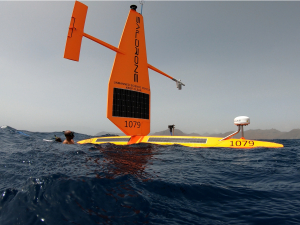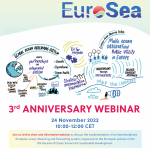Preliminary results of a new EuroSea study provide insights into the Eastern Tropical Atlantic Ocean’s role in climate change and the oceanic carbon cycle.

Using a variety of observational platforms, researchers are able to collect high-quality carbon measurements. This is key to improve our understanding of the ocean’s response to anthropogenic carbon invasion. Initial findings and results from the deployment of these tools are promising and provide a new approach to tackling complex societal challenges.
The study aims to better understand the ocean’s role in climate change and assess long-term changes in the oceanic carbon cycle. Researchers collected data in the remote area of the Eastern Tropical Atlantic Ocean using a variety of observing tools, including biogeochemical Argo floats, moored buoys, and autonomous surface vehicles. This data will be used to improve the spatio-temporal coverage of carbon measurements in the region and enhance the robustness of tropical carbon flux estimates.
The Tropical Atlantic region, which stretches from Southern Florida to Angola, is facing multiple oceanic and climate variations that can have natural and human-induced causes. These variations include El Niño, the North Atlantic atmospheric oscillations, subtropical cells and cyclones, the Atlantic Meridional Overturning Circulation, the Atlantic Multi-Decadal Oscillation, and gyres. These phenomena can result in storms, rainfall, flooding, and changes in biogeochemistry, including anoxic conditions, high-productivity areas, local oxygen depletion, freshwater discharges, and nutrient inputs from rivers. The Tropical Atlantic is also a significant source of greenhouse gases, including CO2 and N2O, and is experiencing acidification and increasing trends in sea surface temperature, salinity, upper-ocean heat content, and rainfall. In order to better understand and address these changes and their impact on the region and on climate change, it is important to acquire in situ data and improve numerical models.
EuroSea has made significant progress in collecting and analyzing oceanic carbon data in the Eastern Tropical Atlantic region. By deploying multiple autonomous tools equipped with various sensors and collaborating with international institutions, EuroSea has improved the capacity to monitor tropical carbon variations and optimize the existing Tropical Atlantic Observing System. The use of new technologies such as the Saildrone platform and VeGAS pCO2 sensor has the potential to enhance the global ocean observing system and reduce operating expenses through shared resources. By comparing data from multiple platforms, EuroSea has been able to increase the accuracy and confidence of its datasets, giving us a more complete picture of the changes occurring in the Eastern tropical Atlantic region
As the effects of human pressure and global climate change continue to impact the Eastern tropical Atlantic region, the need for sustained observations of oceanic carbon data is more pressing than ever. That’s why EuroSea’s efforts to collect and analyze this data are so valuable. By deploying multiple autonomous tools equipped with diverse sensors and collaborating with international institutions, EuroSea has greatly improved our understanding of tropical carbon variations and how they are affected by these external factors.
This research is vital for understanding and addressing the challenges facing the region. But further work is needed to establish internationally agreed protocols for collecting high-quality carbon data in the region. By joining the effort and supporting EuroSea’s work, you can help ensure that persons in charge have the information they need to make informed decisions about the future of the Eastern tropical Atlantic region and the planet as a whole. Together, we can make a difference.
Reference: EuroSea Deliverable D7.1 – Report on demo mission and dissemination pathways of obtained data – download

